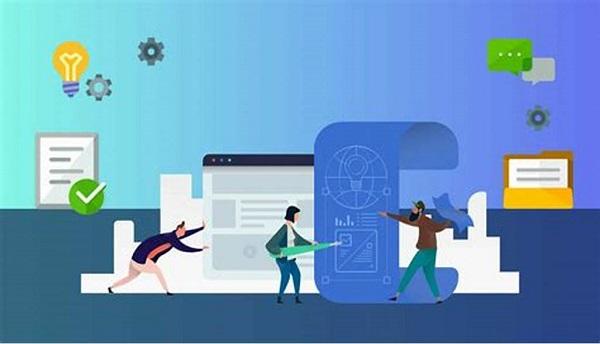
Data breaches are increasing day by day and many firms indicate that they lack sufficient protection against such risks due to a lack of IT security personnel to assist. Due to a scarcity of cybersecurity expertise, many businesses are prone to expensive data breaches.
Threat modeling:
Information security specialists utilize threat modeling to discover security weaknesses in a firm’s IT architecture and design strategies to secure its assets. This book delves into cyber risk modeling and outlines which abilities and technologies are most important for businesses.
Cyberattacks are becoming more complex every day, and they are inflicting massive harm to firms’ systems. Organizational threats are identified via a systematic procedure by security specialists.
The purpose of an advanced threat specialist is to evaluate and analyze potential cybersecurity threats. The risk intelligence agent can design how and where to avoid each type of violence once they have this data. Threat modeling is a technique used by security personnel to determine the much more susceptible regions of a group’s computers and applications.
Process for Modeling Cyber Threats:
To determine if the danger has been effectively reduced, cybersecurity experts must achieve a number of criteria.
-
Define the scope of the project
Choosing a perspective concentrates the attention on a specific topic. Trying to cover too much ground may lead researchers to overlook flaws. Analysts frequently concentrate solely on a single or two parts of the program at a period.
-
Dismantle the System
Breaking down the infrastructure is the first step in hazard analysis. Each event or activity that occurred in the process must be understood by cybersecurity experts. The following is a brief description of their findings.
-
External Requirements
External dependencies are systems that are not appropriate for the target entity. An outside reliance could, for instance, be:
A company-wide system, including customer management or hr information system.
Technology at a 3rd supplier or former partner that feeds knowledge to the victim machine, including such inventory status information from just a company’s database.
-
Points of Entering and Exiting
Entry points are the precise spots in the network to which an intruder could get access. Input elements on such a feedback form are an instance of a point of entry. Exit endpoints are the locations at which information departs a computer. The “trust border” is defined by inlets and outlets.
-
Assets
Whenever an intruder attacks a network, they usually have a specific aim in mind, such as obtaining entry to a certain organizational asset. A hostile attacker, for instance, could desire a record of an interaction between customers as well as each user’s private details.
-
Levels of Confidence
The service’s trust level denotes certain access privileges. These access permissions are compared to the entrances and exits by threat intelligence officers. This allows users to see what permissions an attacker would need to obtain entry to the resource.
-
Flow of Information
Data flows are produced by threat intelligence specialists to get a high-level understanding of how to receive news across the system. Researchers can see what occurs towards the information at each stage in these graphs.
Most in-demand cybersecurity skills in 2022:
The following are some of the most in-demand Cyber Security talents one could learn:
-
Have a basic understanding of hacking:
You’ll have to understand how to “legally and morally hack” to secure your company from computer hackers. You’ll need to master hacking skills to comprehend how well a network could be hacked and then determine the most effective remedy.
-
Security in the Cloud:
As more businesses move their information to the server, cloud-based protection services are becoming increasingly critical to safeguard and manage their information. Companies require cloud-savvy security personnel as they shift to the cloud. As a result, the cloud-based security competency will equip employees with the necessary fundamentals for securing information in the cloud.
-
Skills in Digital Forensics:
To increase data security, digital forensics and security frequently collaborate. Digital investigation awareness will help anyone progress in the cybersecurity job. Both are concerned with the security of digital content and data. While security is concerned with preventing attacks, digital forensics is concerned with what transpires after such an attack.
-
Security on the Blockchain:
Blockchain seems to be a developing technology that is expected to form the foundation for a wide range of security technologies, including smartphone and Connected devices, supplier integration, network management, and access control. Since an attacker would have to delete data saved on each and every remote browser in the worldwide network to delete or damage a ledger, it provides unmatched data protection. Given the difficulty associated with entering and infiltrating a system, blockchain safety reduces the chance of getting shot by hackers.
-
AI stands for Artificial Intelligence (AI)
Artificial intelligence could help security specialists truly understand the cyber ecology and recognize anomalous behavior. When cyber threats are identified, security personnel are aided by automated systems and guidance. Security specialists can employ AI to augment their capabilities in the fight against cyber-attacks on critical networks and servers.
-
Specialties in Programming:
Any security expert must have a thorough understanding of languages such as java, WordPress, C, or Objective – c. They will be able to perceive the possibility of network attacks & design practical counter-measures as a result of their coding linguistic competence.
-
Security in the Internet of Things:
IoT safety is concerned with the protection of internet-connected networks and systems. Security is the biggest issue for a large number of Nodes, so it is critical for the online environment’s long-term health. You would be willing to examine contemporary privacy risks within the IoT world by mastering this skill.
-
Communication Capabilities
Like a cyber professional, you’ll collaborate with a variety of departments and units. It’s critical to really be good at communicating with others in order to share your problems, worries, and answers. You ought to be capable of communicating only the most detailed details to people of various degrees in a clear and understandable manner.
-
Problem-Solving Capabilities:
As a network designer, you may occasionally find yourself in the midst of issues. In every technology arena, an issue methodology could enable you to develop inventive solutions even for the most difficult security concerns.
How Can I Develop My Cybersecurity Skills?
Starting with a cybersecurity training course seems to be a fantastic place to start. An online security training will show anyone all the basics and applied ideas of security, enabling the users to enhance their information security or other technical abilities. Security, on either side, is a vastly complex and continuously changing subject. To maintain a competitive advantage, you’ll need to conduct your individual research, read blogs, follow specialists, and gain more experience.
Cybersecurity threats:
Let’s have a look at the best security fears for 2022 since cybercrime continues to be the dominant threat to any organization on the planet.
-
Phishing is a form of fraud.
Phishing is indeed a type of cyberattack wherein individuals are sent precisely personalized marketing communications in order to collect confidential material including login details, credit card details, as well as other financial documents.
-
Cryptojacking
Cryptojacking is when attackers exploit your laptop to mine bitcoin without your permission. Hackers generate cryptocurrency on other people’s computers because cryptocurrency demands a lot of CPU power. This can cause your laptop to slow down or put security in danger.
-
Deep Fakes
They are images, films, or voice tapes generated by hackers for unlawful purposes utilizing Artificial Intelligence. These videos are created by changing identities in movies or changing the audio.
-
Attacks against the Internet of Things (IoT)
One could stay in touch at work and at home thanks to the technology of Things (IoT). Computers and ipads, cameras, firewalls, wearables, home appliances, autos, security systems, and other gadgets are all hooked up to The Internet of Things. If attackers seize the power of these, important information could be lost.
-
Attacks via Ransomware:
In such ransomware, attackers get access to the computer hard drive and lock it down. If the user makes a payment, the attackers will release the infected file. Cybercrimes may cost companies tens of billions each year when attackers use technology to reach a group’s records and seek compensation for the content.
Final thoughts:
The cybersecurity business had space for expansion and can provide you with exciting career options. Because there is still a scarcity of cybersecurity experts and entrepreneurs, it’s the greatest moment to gain cyber skills and reach the industry.
It really is an unending process. Aggressors would attempt to misuse the web in immoral methods as more individuals utilize it for corporate or personal purposes. With growing online usage as well as a rise in hacker groups, the requirement for security experts would keep rising, offering cyber experts a stronger position than before.




